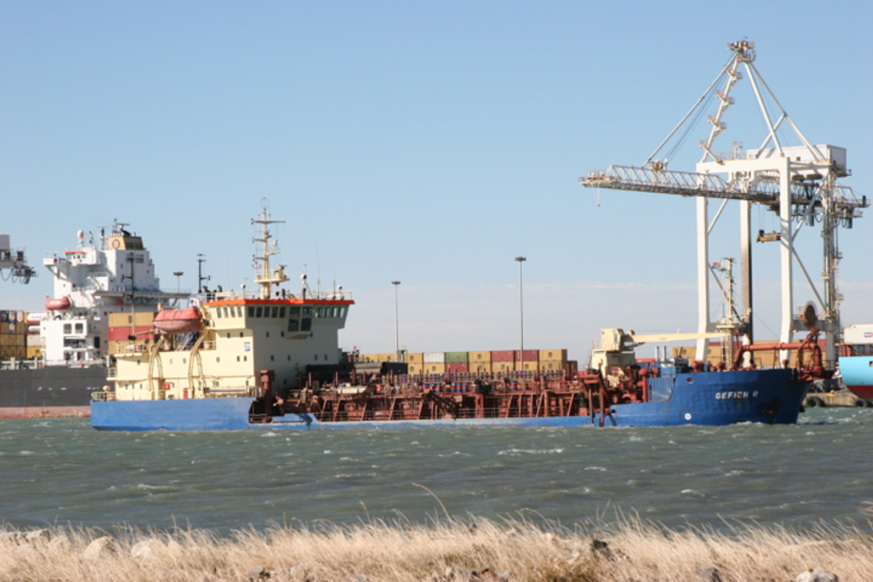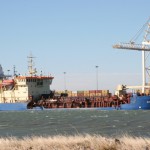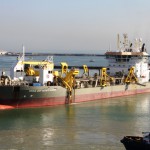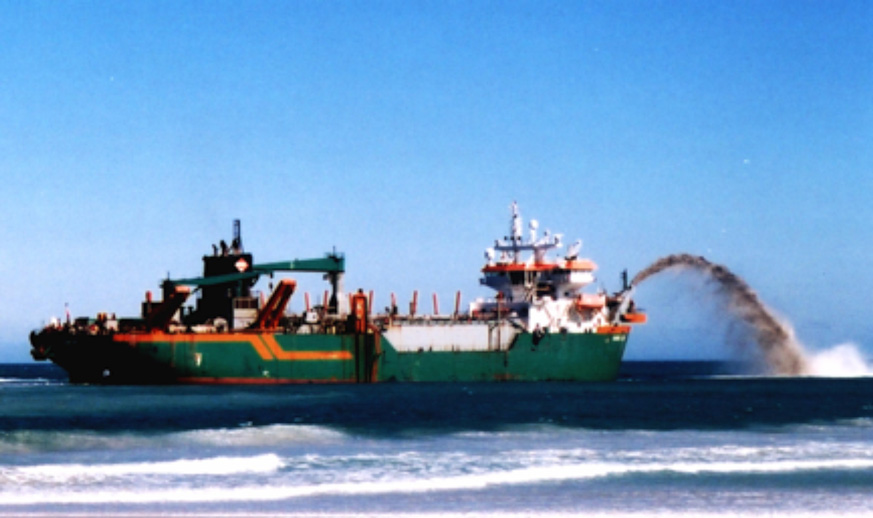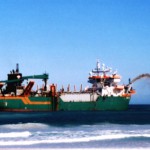In all ports, sand/mud accumulates and needs to be removed by specially designed ships called dredgers that suck up the sand from the bottom of the harbour, and carry it out to sea where it is dumped. These are known as suction dredgers. Some ports do not have much sand accumulation and need very little dredging. Other ports (e.g. Durban, East London and Richards Bay) require regular dredging.
Dredging is also needed when a harbour is being built or extended so that the required water depth can be achieved. Where rock has to be removed, a grab dredger is needed. This vessel has a small crane on the foredeck that lowers a grab to the seabed and lifts pieces of rock to the surface. This is either placed in a special hold (hopper) on the dredger or in a hopper alongside the dredger. The dredged rock is then taken out to sea and dumped.
In a most remarkable recent operation, the digging of the second lane of the Suez Canal (2014-2015) required such extensive dredging that three-quarters of the world’s dredger fleet was involved in this huge project, the largest dredger fleet ever seen in one place.



